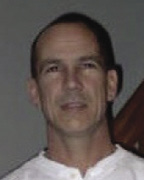As our country advances toward becoming more energy independent and environmentally friendly, many are looking to non-traditional ways to save money while minimizing impacts to our planet. Two institutional/real estate sectors that have been early to adopt non-conventional heating and cooling technologies are public and private academic institutions across the country.
School administrators represent a diverse mix of people with one common goal, to provide the best possible education by being responsible leaders and mentors in their community. Public and private institutions nationwide are realizing the many benefits to installing ground source or "geothermal" heating and cooling systems. Administrative and community leaders generally tend to think long-term when investing in new infrastructure. So, when designing a school that will be in operation for 50 to 100 years, why not install a heating and cooling system that can last the life of the building? This is especially true when they realize the economic payback (through reduced energy consumption costs) within the first 7 years, as well as the fact that such savings will continue for decades. Although the required mechanical heat pumps located inside the building will typically need to be replaced every 25 to 30 years, an exterior closed-loop geothermal field/network will last up to 200 years.
Ground source heating and cooling relies on utilizing the Earth as a heat sink, by drilling and installing heat transfer wells into the Earth's surface (typically several hundred feet) where the temperature remains relatively constant. Heat transfer (for heating or cooling) can be accomplished by installing either a closed loop system, a standing well system, or an open loop system. With closed loop systems, water, or a mixture of water, and food grade anti-freeze is circulated in a continuous closed loop. With a standing column, water is circulated continuously in a deep well without using continuous piping in the well. And, with open loop systems, well water is pumped in a constant flow, and then discharged to another location. All of these types of systems utilize the constant 50 degrees F temperature that is available almost anywhere in the world. The result is a very efficient heating and cooling solution that saves up to 60% on traditional energy costs.
The upfront costs of installing a system are typically 75% higher than installing a high quality conventional HVAC system, however the payback period for the additional cost to install a geothermal HVAC system in most educational facilities is usually under 10 years. Depending upon the financing, most can be financed with traditional fuel cost savings combined with existing tax credits.
You may be surprised to learn that there are hundreds of schools across the country using ground source heating and cooling. Some have been in operation since the early 1980s. During the past decade, a movement to install systems in schools throughout New England has begun. Gorham, Maine constructed a new school in 2004-2005, and it reports a savings of approximately 38% based upon the school being used primarily during the heating season. The school department is so satisfied with the performance of the system that it currently has another school under construction, which will also use a closed loop geothermal system.
Other construction projects involving educational facilities in New England during the past few years that incorporate geothermal systems include: University of Maine in Farmington; Ellsworth Elementary School in Ellsworth; Brunswick Elementary School, Brunswick; Kingswood School, Wolfeboro, NH; Harvard University, Cambridge; Yale University, New Haven; Noble and Greenough School, Dedham, Mass.; Waterford High School, Waterford, CT; and Hampden Academy, Hampden, ME.
By having the leaders of our educational systems focusing on long term solutions that are both economically feasible and environmentally friendly, it shows that our children's educators are most certainly "leading by example."
Dan Everett is the manager of the national geothermal division of Norfolk Ram Group, LLC, Plymouth, Mass.
Tags:
Non-conventional heating and cooling: Public and private academic institutions leading by example
December 16, 2009 - Construction Design & Engineering
 (1).jpg)








.png)